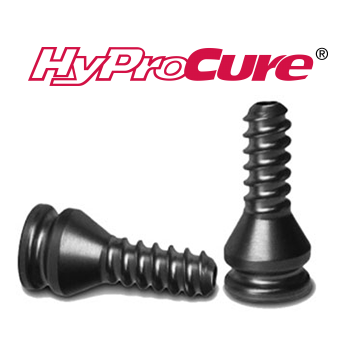Treatments
HyProCure® Offers a Simple and Effective Solution for Flat or Misaligned Feet
The HyProCure® procedure offers a simple and effective solution to a number of symptoms, sometimes caused by a misalignment of the foot. A misaligned foot is not normal and should not be ignored. It will never get better on its own, and in fact, it will deteriorate over time.This problem is quite common but under-treated, and it affects people of all ages around the world.
 | How do you know if your feet are misaligned?Do you suffer from:
Skeletal misalignment leads to the abovementioned symptoms.As shown in the figure on the left, a misaligned foot can cause skeletal misalignment due to the:
|
So What's Exactly Taking Place? Let's Get Technical
As shown in the figure below, there is a naturally occurring space between the talus and the heel bone called the sinus tarsi. When your feet are properly aligned, this space stays in an open position. If your feet are misaligned the talus bone moves excessively on the heel bone and the sinus tarsi collapses. It is the collapse (closing) of the sinus tarsi that causes the misalignment of the foot and the subsequent secondary effects higher up on the kinetic chain.
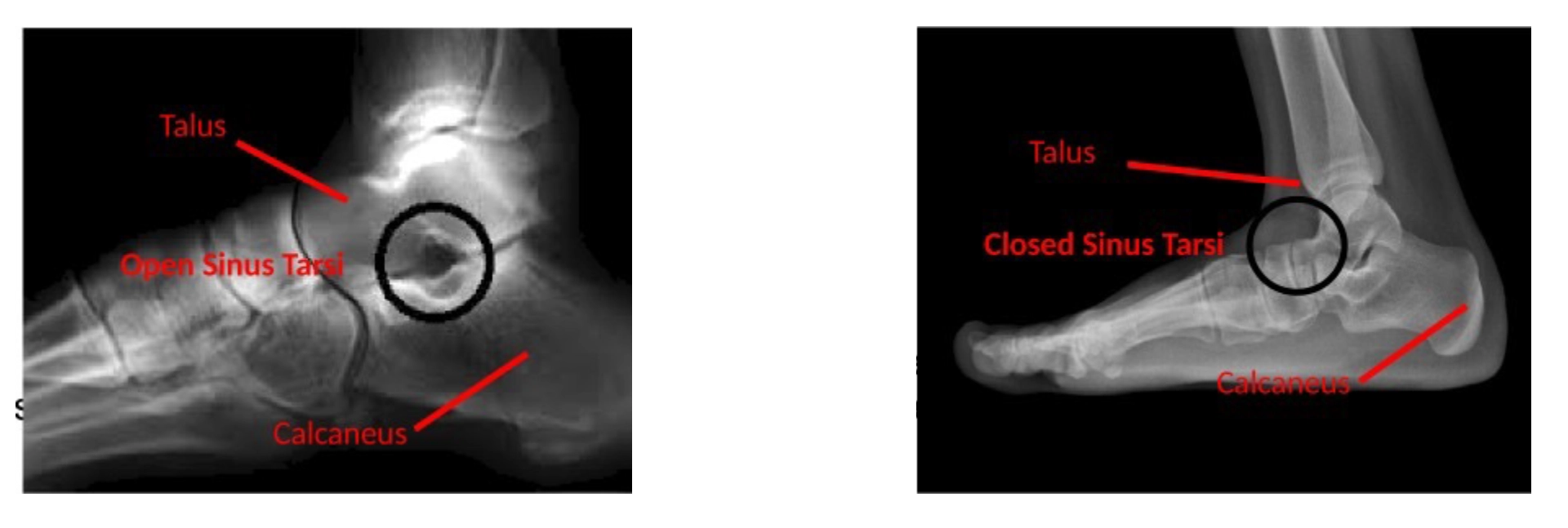
The HyProCure® procedure may sound intense, but it’s minimally invasive and takes as little as 30 minutes and is typically performed under local anesthesia though Nitrous Oxide (laughing gas) is available.
Medical Foot Solutions is currently the only clinic in Ontario, and only a handful in Canada, that is Atlas Certified to perform this procedure. The procedure instantly realigns and stabilizes the hindfoot, while allowing a normal joint range of motion.
The overall balance and alignment of the foot and ankle are improved, and the arch of the foot may appear more normal. Most patients are able to walk immediately after the procedure and can walk completely normally a couple of weeks later.
HyProCure® Can Help You Get Back to Feeling Normal
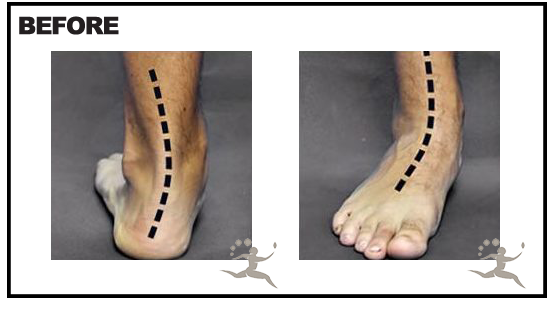 | 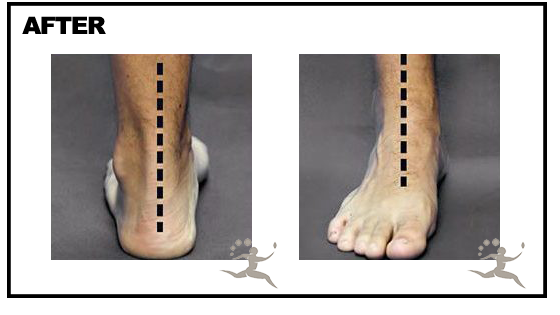 |
Contact the professionals at Medical Foot Solutions today to find out more about HyProCure®.
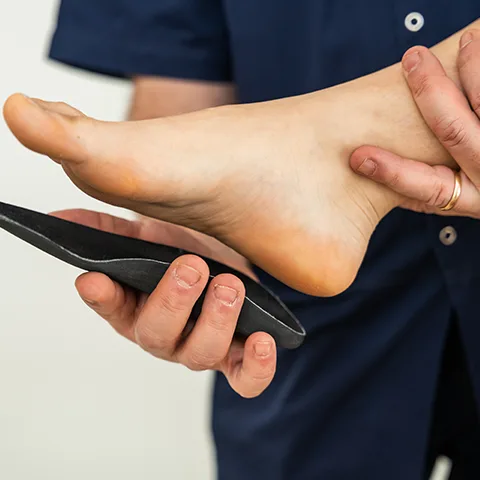
Do your feet hurt? Is there pain in your forefoot, arch or heel? Do you feel like your feet need more support? If you’ve answered yes to any of these questions, orthotics may be the answer for you!
No two people’s feet are alike, which is why having custom orthotics is vital to solving many foot-related issues.
Orthotics are designed to reduce or control abnormal motion of the foot. Typically, foot-related pain will occur when the foot is attempting to compensate for an abnormal alignment of the foot or lower leg. These compensations will manifest themselves into a variety of ailments including: plantar fasciitis, metatarsalgia, sesamoiditis, hammertoes, neuromas, shin splints (anterior tibial tendinitis), arch pain sciatica, patella for moral syndrome, corns, calluses, early arthritic changes and so forth. A misaligned foot can cause an endless array of secondary problems.
You can benefit from custom orthotics if you’re suffering from:
- foot and ankle pain/li>
- knee pain
- hip pain
- Lower back pain
- Sciatica
- foot misalignment (including those with a high or low arch in their feet)
Is There a Difference Between Off-The-Shelf and Custom Plaster Cast Orthotics?
Most definitely! Grocery stores and drugstores often sell off-the-shelf (OTS) devices and insoles. These can range from full-length memory foam insoles to small gel heel cups. They come in a variety of shapes, sizes and colours and usually have a “scientific” looking brochure enclosed with them. Do not be fooled by the fancy marketing. OTS insoles are generic and are only marginally better than the original insoles that came with your shoes. OTS insoles are not the same as custom orthotics. Orthotics are made to the specific properties and shape of your foot. They are designed to realign and/or accommodate your foot deformity or misalignment. Custom-made orthotics are made to your unique foot profile. Once a plaster mould has been taken of your foot it generally takes 2 to 3 weeks for your orthotics to be manufactured.
Benefits of Plaster Cast Custom Orthotics
Custom orthotics are accurate. A plaster cast can record the precise details of a patient’s foot far more accurately than any other method.
The foot is correctly aligned. Since plaster casting is generally performed when the patient is in a non-weight-bearing position, it allows the chiropodist to properly align the forefoot and heel with the lower leg. This position is known as the subtalar neutral position. Only in this position is the foot properly aligned which ultimately yields a better orthotic.
Do custom orthotics provide long-term correction?
The short answer is no. Orthotics are able to control some of the motion of the foot but only when you are wearing them. Orthotics are like eyeglasses. They are an external medical device that works only when you are wearing them. When you stop wearing your glasses your blurry vision returns. This is very similar to wearing your orthotics. Orthotics do not fix or cure your feet, they only manage the misalignment. However, with proper shoes and a well-made orthotic your pain can be effectively managed to the point that your symptoms will resolve. If you are looking for a long-term correction, an internal solution is required such as HyProCure. HyProCure works by addressing the problem internally, and in many situations, an orthotic is no longer required.
Contact us or book an appointment online to discuss having custom orthotics designed and fitted just for you.
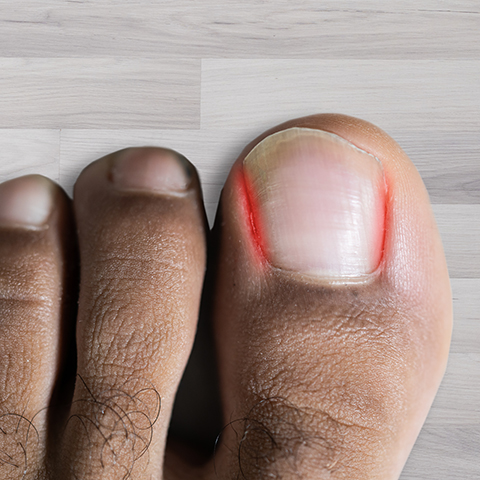
In certain cases, ingrown toenail removal surgery is the only option to treat a problem with an ingrown toenail. Ingrown toenail removal surgery is generally performed when a portion of your toenail has embedded itself into the side of your toe and other options to remove it have been unsuccessful. A relatively simple surgical procedure called an excision can be done in office and under local anesthesia
After the procedure, a chemical cauterizing agent is applied to the growth plate at the base of the nail. This will help prevent the tiny portion of nail that was removed from growing back. Most patients are able to comfortably walk out of the office after the procedure and return to work or school the next day.
Are you experiencing any of these symptoms?
- pain and tenderness on one or both sides of the toe
- swelling and redness on one or both sides of the toenail
- pressure and pain when wearing shoes
- overgrown skin at the tip of the toe or alongside the nail
If you are having any of these symptoms and have tried other options you may benefit from ingrown toenail removal surgery.
Contact us now to book an appointment.
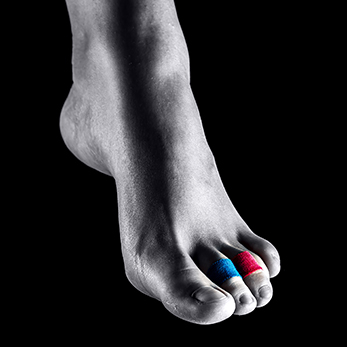
A tenotomy is a minimally invasive surgery that is performed when a tendon in your foot is overly tight, causing a misalignment in the bone position of your toe. A great example of this is what is commonly known as a hammertoe. Hammertoes can be painful, and that pain can be reduced by adding shoe inserts, such as Silpose Gel pads. That is when two opposing muscle groups cause the toe to buckle. To be eligible for this procedure, the joints in question must be flexible.
The surgery can be performed comfortably in the office without needing to take any time off work or school, and patients are able to walk immediately after the surgery
Do you have or are you suffering from:
- Abnormal bend in the joints, such as hammertoes or crooked toes
- Inability to straighten toes
- Corns and callouses on the top of the middle joint of the hammertoe
Contact us today if you think a tenotomy could help you and your feet get back to feeling normal.
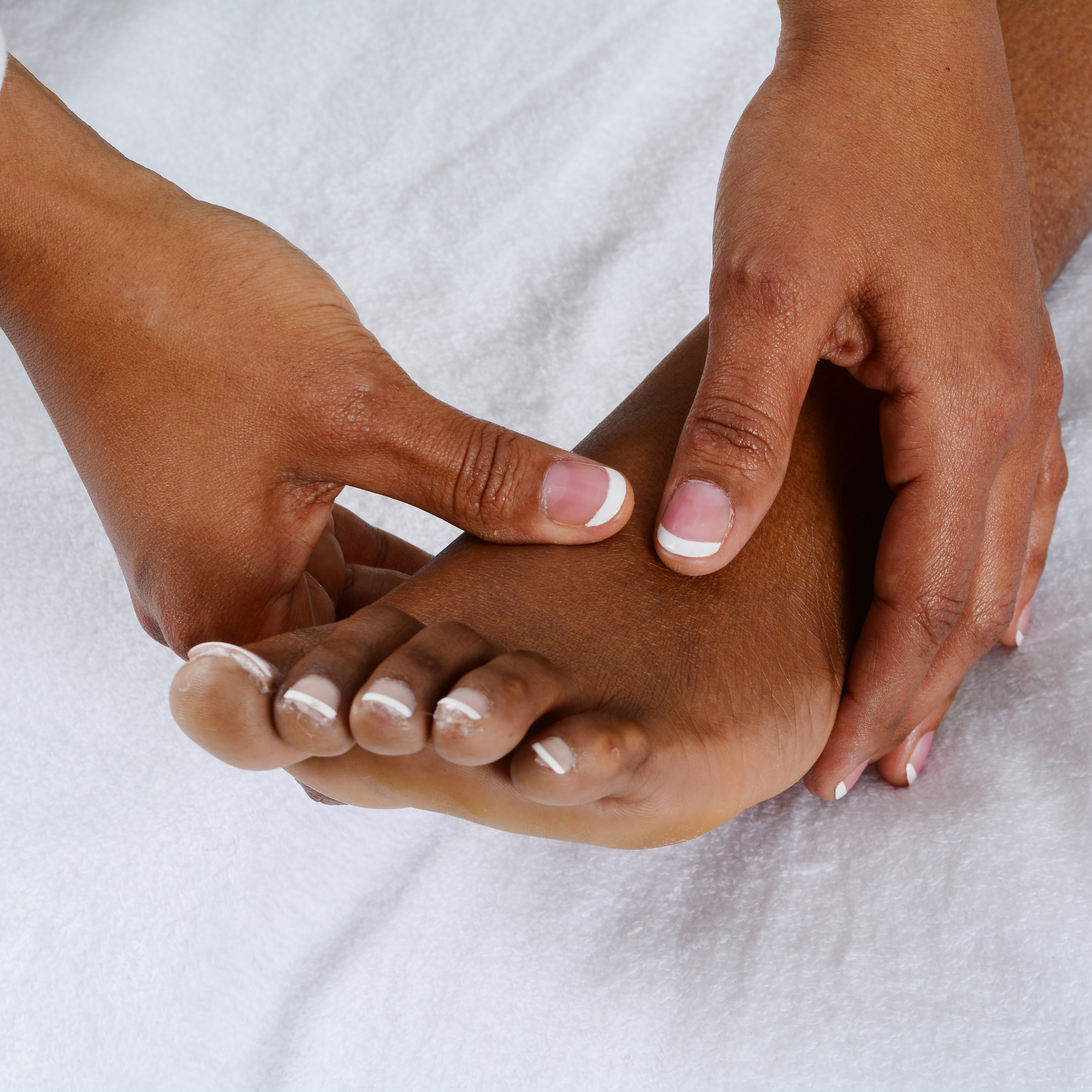
Patients who haven’t had any success with orthotic therapy and or injection therapy might need to consider surgical treatment. This form of treatment is aimed at reducing the trauma or compression on the digital nerve. The procedure involves making a small incision between the third and fourth toes while under local anesthesia. The transverse ligament (a tissue that holds the metatarsal bones together tightly) is identified and cut.
The end result will be decompression of the localized nerve. Patients are typically able to walk around immediately after the surgery, but there will be some bruising. You should be fully healed in four to six weeks.
Do you have or are you suffering from:
- Numbness or tingling in toes
- Pins and needles sensation in foot or toes
- Shooting pain
- Burning sensation
Book an appointment today to find out if a surgical treatment for a neuroma is right for you.
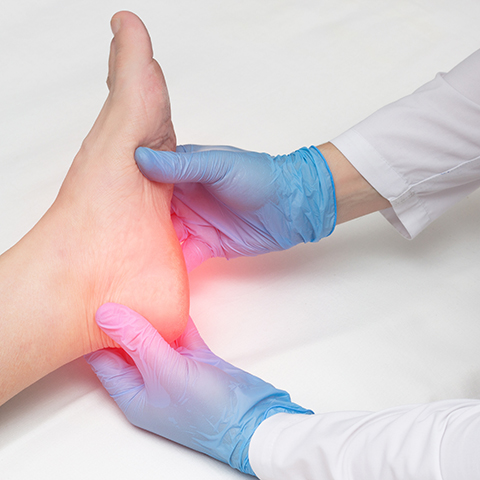
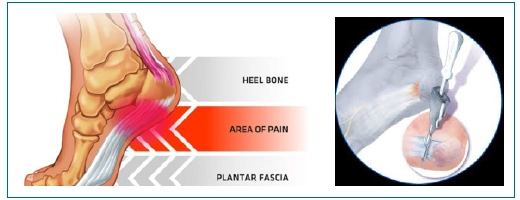
Do you suffer from chronic heel pain? Have you tried all of the conservative methods, such as orthotics, cortisone, ultrasound, shoe modifications and physiotherapy, and nothing seems to work? Are you frustrated and in pain? There is a minimally invasive surgical option called a fasciotomy, which may be the solution for you.
A fasciotomy is generally performed when all other conservative treatments have failed or the tissue has moved from an acute inflammatory stage to a degenerative stage (abnormal thickening of the fascia). When a fasciotomy is performed a small incision is made near the bottom of the heel. The plantar fascia is identified and partially severed. This treatment is used for patients who suffer from chronic heel pain who have not responded to orthotics, footwear modifications, cortisone injections and ultrasound or physiotherapy treatments. A fasciotomy a minimally invasive procedure with a high rate of success. Suffer no more, call us today.
Do you have or are you suffering from:
- chronic heel pain
- recurring heel/foot pain after trying other treatment options such as orthotics or cortisone injections
- burning or heat sensation in the heels
- pain every morning when getting out of bed
Contact us today or book an appointment online to see if a fasciotomy is right for you.
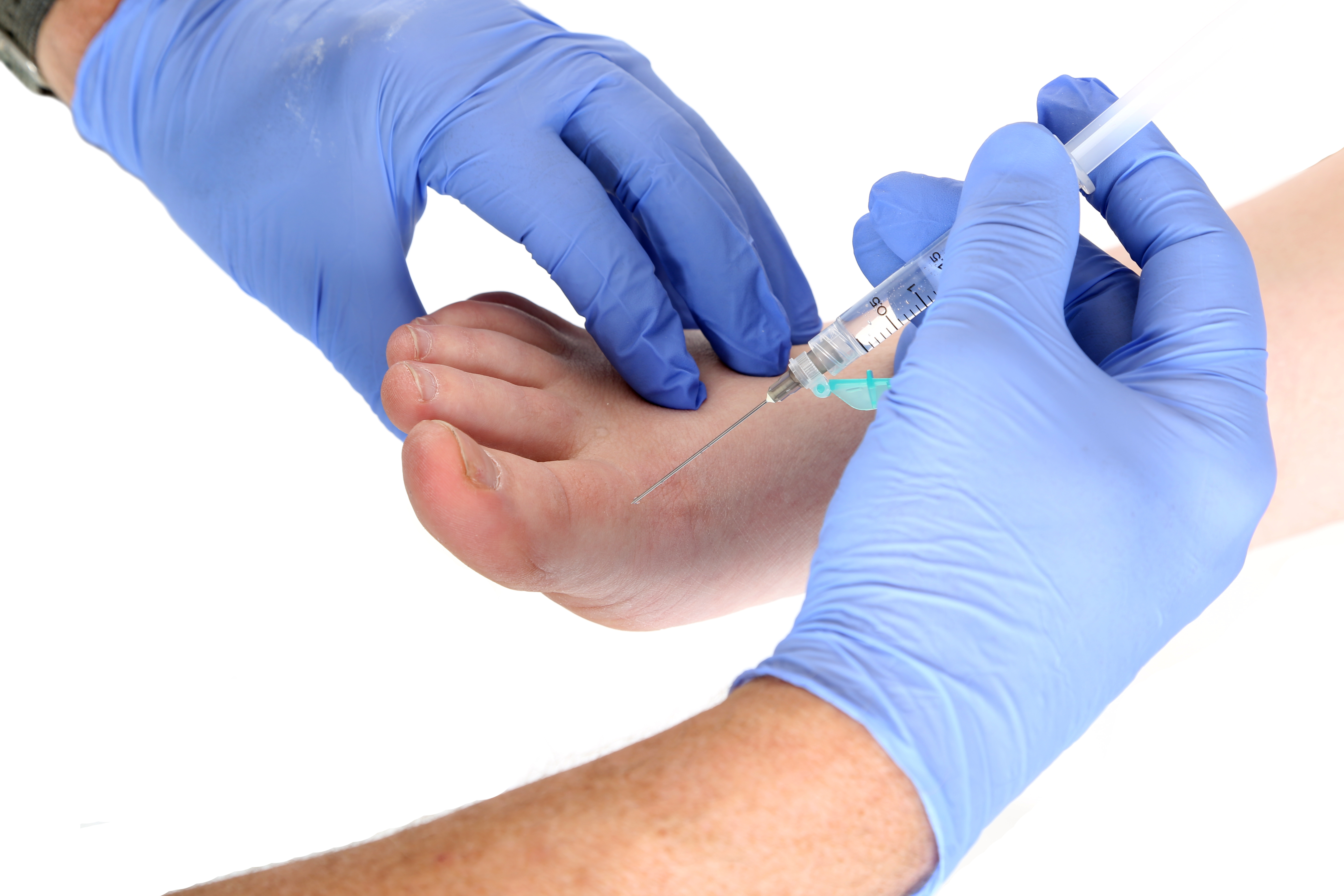
A neuroma is a painful condition, also referred to as a “pinched nerve” or a nerve tumor. It is a benign growth of nerve tissue frequently found between the third and fourth toes. It brings on pain, a burning sensation, tingling, or numbness between the toes and in the ball of the foot.
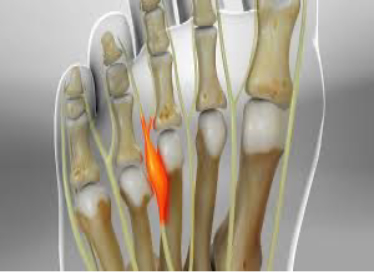
Do you have a burning, stabbing pain or numbness that radiates into your toes? Do you find that no shoes are comfortable? You may have a neuroma. A series of alcohol injections may be the answer you have been looking for!
Alcohol injection therapy involves using a 4% ethyl alcohol solution to dehydrate the nerve and surrounding tissue. Once the nerve has been dehydrated, the nerve will stop functioning, and your pain should resolve. (It should be noted that the injected area of the foot will be permanently numb). Alcohol injections can also be used to treat “Morton’s” neuroma or painful scars. Generally, seven injections spaced one week apart are required for this treatment to be successful. You must commit to receiving all seven injections for a successful outcome. Other treatment options include cortisone injection or
Do you have or are you suffering from:
- Numbness / tingling in toes
- Pins and needles sensation in foot or toes
- Shooting pain
- Painful scar
Book an appointment online today if you would like to find out more about alcohol injections.
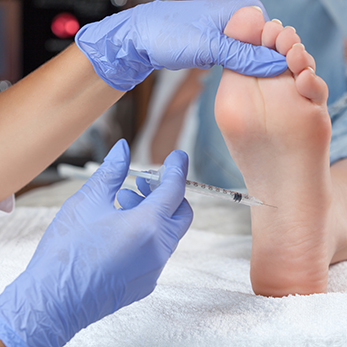
Cortisone injections work by minimizing inflammation, which is a major cause of foot pain. Cortisone is commonly used to treat heel pain, bursitis or Morton’s neuroma. Cortisone begins to work immediately after the injection, and inflammation will start to subside in a few days. Ultrasound-guided cortisone injections can offer relief after a foot or ankle injury for weeks or even months.
Do you have or are you suffering from:
- Pain / stiffness in the bottom of the heel
- Pain in heel when you take first steps out of bed
- Pain when you stand for long periods of time
- Neuroma
Book an appointment to see if a cortisone injection is right for you.
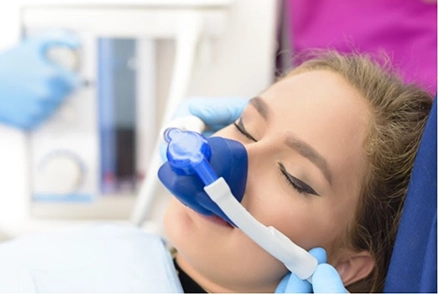
Do you get nervous at the prospect of getting a needle? Or, when you go to medical appointments, do you feel anxious? Have you ever fainted at the sight of a needle or during a procedure? If you answered “YES,” it is time to take away that anxiety! Nitrous oxide may be the solution you have been looking for. Nitrous oxide is a gas, and it is commonly known as “happy gas” or “laughing gas.” Giving nitrous oxide can help reduce your pain and anxiety during your podiatric treatment.
How does it work?
Nitrous oxide slows down your brain and your body's responses, and the effects of the drug varies depending on how much has been inhaled. Taking nitrous oxide can cause: feelings of euphoria, relaxation and calmness. fits of giggles and laughter – hence the nickname 'laughing gas'. Nitrous oxide also helps with pain because it blocks the pain receptors. The gas is delivered through a small nose piece, and you breathe in the gas as you would with normal breathing. A chiropodist will be next to you during the entire procedure, ensuring you are happy and relaxed. Because nitrous oxide is metabolized very quickly by your body, you will return to your normal mental state in a matter of minutes.
Nitrous oxide is completely safe with no lasting effects. In fact, it is so safe that you can drive home after your procedure! You are always alert enough to answer questions, and you are in complete control; you are just soooo relaxed. All procedures we do at Medial Foot Solutions can have nitrous gas administered.
STOP the anxiety, put a smile on your face, and ask for nitrous oxide gas.
Book an appointment if you think that nitrous oxide can help you.
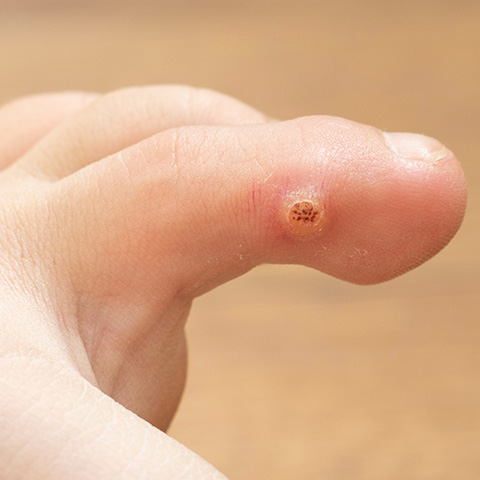
Autoimmune therapy is a unique form of treatment that involves putting a small amount of the wart virus into the deeper layers of the dermis. This will activate the immune system, which will then be able to fight off the virus that causes warts. Once the immune system has been activated, it typically requires four to six weeks for the virus to be fully eradicated.
Do you have or are you suffering from:
- Small fleshy, rough, grainy growth on the bottom of the foot
- Seed warts (little black dots within warts)
- Warts present on both feet or warts that are larger than 10mm
Book an appointment today to discuss if autoimmune therapy is right for you.
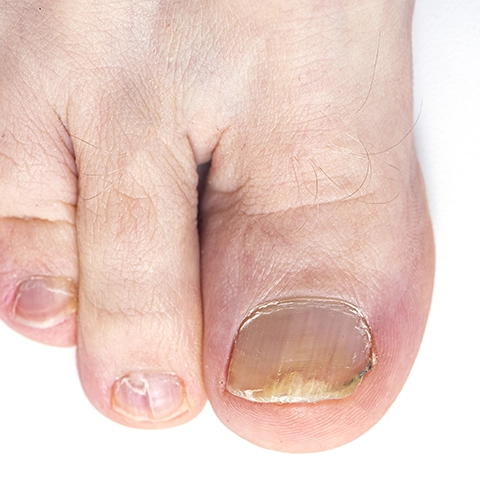
Are you embarrassed by your yellow, discoloured toenails?
Have you tried the topical medications (Lamisil ®, Jubia ®, and Penlac ®) and nothing is working? Are you frustrated? Light therapy may be the treatment you are looking for.
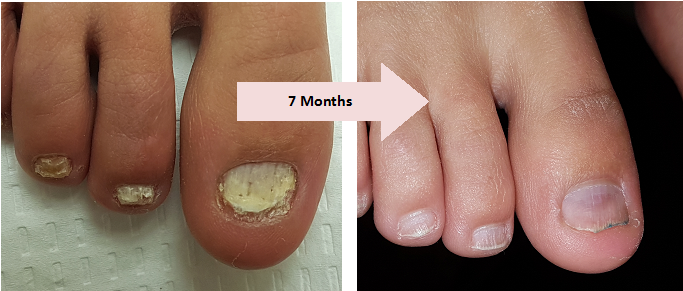
Do you have or are you suffering from:
- A discolored and thickened nail
- Damaged / crumbly nail
Nail Fungus Treatments
Clear Toe light therapy (from ToeFx) is a photodisinfection therapy that involves a photosensitizer, a light source and oxygen. The three components work together to attack any organic tissue that it encounters, which improves and strengthens infected or damaged toenails due to nail fungus.
Simply stated, a dye is applied to the infected toenail, which is then subjected to an incredibly bright light source for five to seven minutes. Seven to ten treatments are typically required within a one to two week interval between appointments. There is no pain associated with this form of therapy.
ClearToe light therapy from ToeFX is authorized for sale by Health Canada as an approved photodisinfection therapy to treat Onychomycosis (toenail fungus). This proven treatment has a very high success rate for treating toenail fungus and is absolutely safe, painless and with no side effects.
Safe, non-toxic ClearToe Serum is applied to the infected toenail, which is then subjected to an incredibly bright light source for approximately 15 minutes. The entire foot is treated at once – the curved casing fits comfortably over all five toes. The ClearToe Therapy Light is a Class II medical device authorized for sale by Health Canada.
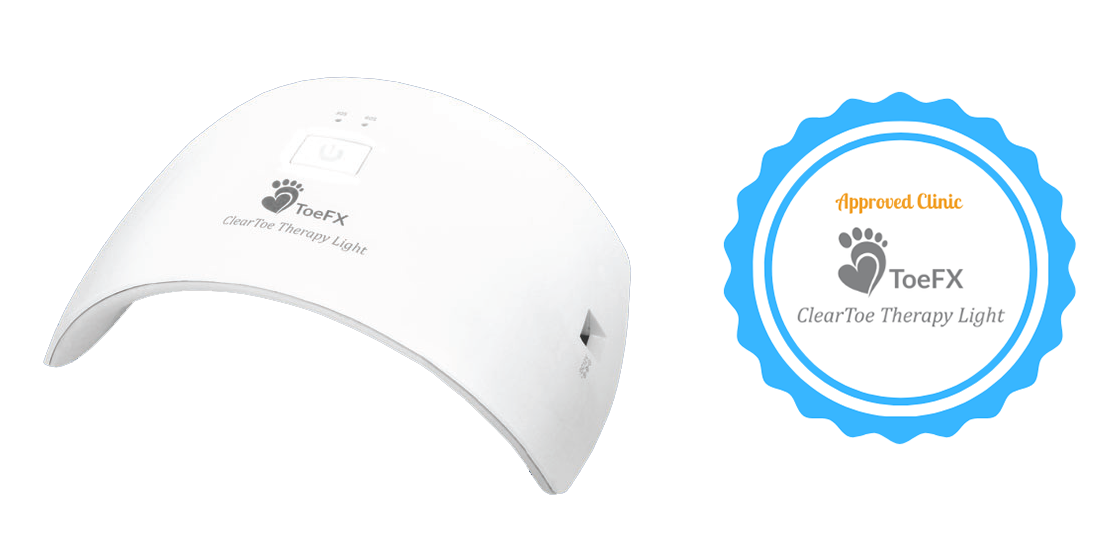
Book an appointment today and feel better about the look and feel of your toes.
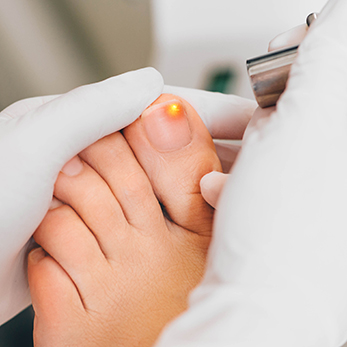
What causes toenail fungus?
Toenail fungus is caused by tiny, microscopic organisms called fungi (the plural of fungus). There are hundreds of different fungi, but only two or three are capable of infecting a toenail. Though an individual can become infected by close skin-to-skin contact with an infected individual (or by sharing an individual's socks), it is NOT the typical root of transmission. Fungi live on everyone's skin naturally and generally do not cause us any problems. However, when the toenail gets damaged, it allows the fungi to enter the nail plate, which then goes on to damage the toenail.
Lasers are incredible devices that can be used to treat fungal toenails and warts. In the treatment of fungal toenails, lasers work by heating the nail plate to approximately 40 Celsius, which causes the fungi to die. Treatments using lasers on fungal toenails only take about five minutes, and we recommend a total of three treatments spaced out six weeks apart. No needles or anesthetic are needed, and it only causes minor to moderate discomfort
Do you have or are you suffering from:
- Dark or yellow streaks on the nail
- A discoloured and thickened nail
- Damaged / crumbly nail
Book an appointment to see if a laser treatment is an option for your fungal toenail.
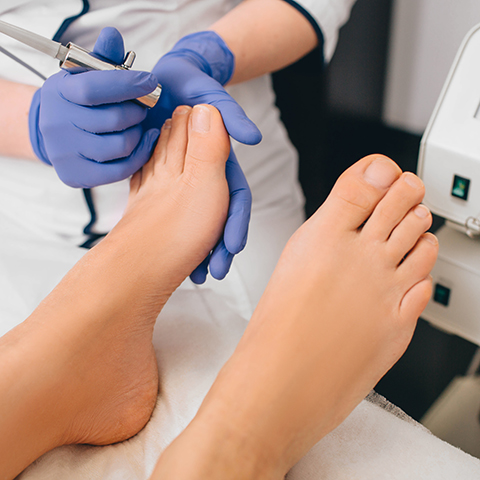
For wart removal, the laser treatment hits the wart on two different levels to help eradicate it. The success rate of this treatment is 96% and will usually require two to three sessions to complete.
- Small fleshy, rough, grainy growth on the bottom of the foot
- Growth on foot is flesh coloured, white, pink or tan
- Seed warts (little black dots within warts)
Contact us today to book an appointment to discuss laser treatment for wart removal.
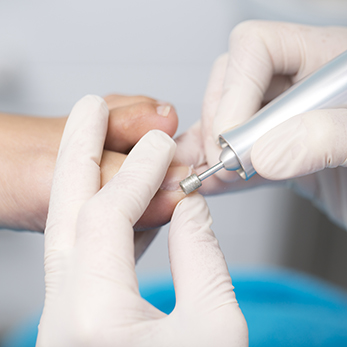
We put our feet through a lot of stress throughout a normal day, and they deserve to be treated kindly in return for all that they do. That’s why routine footcare is so important. Keeping your feet in excellent condition can help avoid more serious issues in the future.
Routine footcare treatments include:
- Nail trimming
- Removal of corns and callouses
- Debriding
- Preventative maintenance
Are you suffering from any of these issues?
- Thick toenails
- Difficulty cutting toenails
- Corns/ callouses
- Dry/ cracking skin
Routine footcare can help minimize these problems. Contact us now to book an appointment as part of your regular footcare routine!
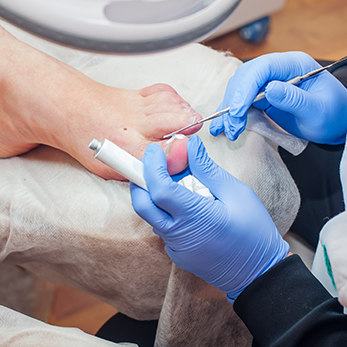
Topical medicines are for use on the skin and can be tremendously effective in dealing with foot ailments and infections that are typically caused by fungus. Topical treatments are an excellent tool in combating:
- Plantar warts
- Athlete’s foot
- Seed warts
- Fungal toenails
Are you showing symptoms or suffering from any of these issues?
- A small fleshy, rough or grainy growth on the bottom of your foot
- A growth on the foot that is flesh, white or tan coloured
- An itching, stinging or burning sensation on the toes or soles of your feet
- Cracking and peeling of the skin on your foot, mainly between your toes and on your soles
- Little black dots within warts
- Your toenail is thickened, yellowish in colour and appears crumbly.
A topical treatment may be the right solution for you! Book an appointment today to relieve your symptoms.


